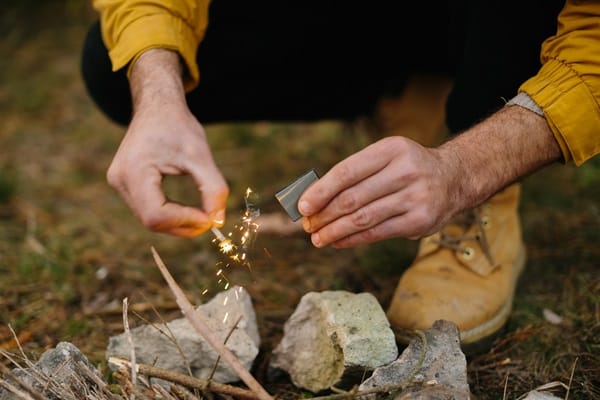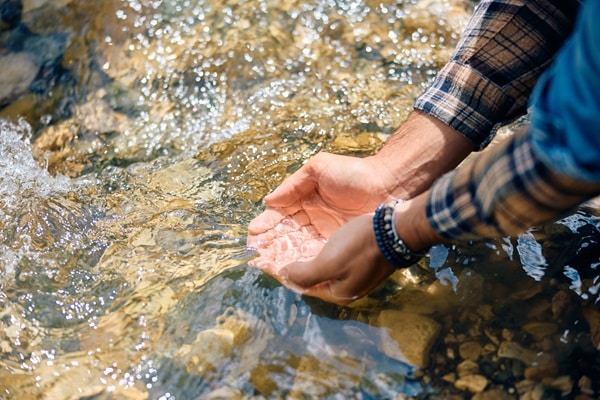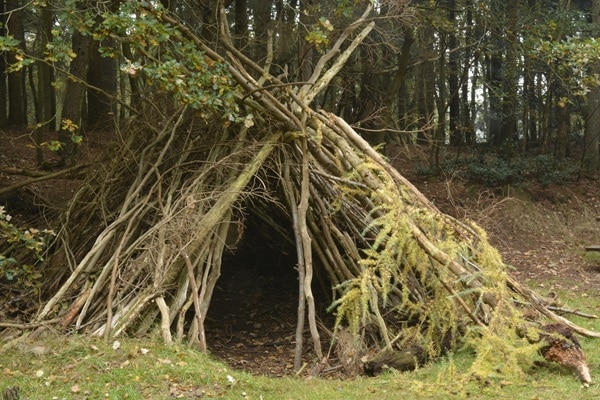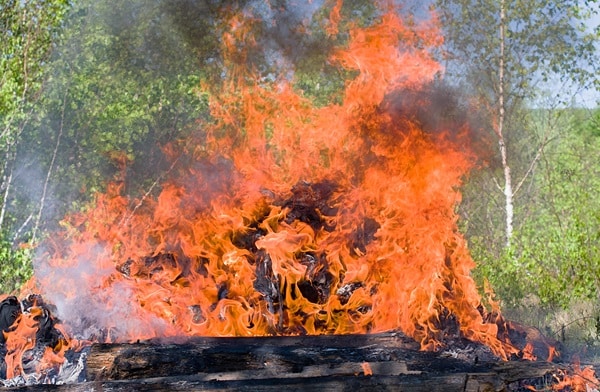In a world where the unexpected can become reality at a moment’s notice, possessing survival skills is more than just a boon—it’s necessary. Whether one finds themselves stranded in the wilderness, facing the aftermath of a natural disaster, or navigating any situation where the comforts of modern life are stripped away, knowing how to survive can make the difference between life and death. This article delves into five critical survival hacks indispensable in a crisis. These skills are life-saving and empower individuals to face adverse situations with confidence and resilience.
Contents
Starting a Fire Without Matches

Fire is a fundamental survival element, providing warmth, light, protection, and a means to cook food. Yet, many find themselves at a loss in the absence of matches or a lighter. However, with knowledge and ingenuity, creating fire is still within reach. One effective method involves using a battery and steel wool. One can create a spark by simply rubbing the battery terminals against the steel wool. This spark, when caught on Tinder, can ignite a flame. This method requires caution, as it involves handling potentially hazardous materials but showcases the ingenuity necessary for survival.
Moreover, this survival hack emphasizes understanding basic physics principles and resourcefulness. The key is creating a conductive connection that generates enough heat to start a fire. Practicing such methods before facing a real emergency can significantly improve one’s chances of success. This hack is a vivid reminder of humanity’s ability to adapt and overcome, using whatever tools are at their disposal.
Finding and Purifying Water

Water is the essence of life, and finding a clean source is a top priority in survival situations. Natural water sources, such as streams or lakes, are valuable resources, but the water they provide often requires purification to be safe for consumption. One accessible method for purifying water is boiling, which kills most pathogens. However, solar water disinfection (SODIS) offers a viable alternative when a fire or a pot is unavailable. Filling a clear plastic bottle with water and leaving it in direct sunlight for at least six hours can disinfect the water, making it safe to drink.
In addition to these methods, constructing a makeshift filter using layers of cloth, sand, charcoal, and stones can remove larger impurities and improve water’s clarity and taste before boiling or exposing it to sunlight for SODIS. These techniques highlight the importance of ingenuity and knowledge of natural processes to ensure survival. By understanding how to leverage the environment and simple materials, individuals can secure one of the most critical survival components: clean drinking water.
Building a Shelter

The shelter is a critical survival priority, offering protection from the elements and potential hazards. The key to constructing an effective shelter lies in understanding the environment and using available resources. A simple lean-to, for example, can be made by leaning branches against a tree trunk or a sturdy horizontal branch and then covering them with leaves and debris for insulation and water resistance. This basic structure can significantly increase a person’s chances of surviving harsh conditions by providing necessary shelter from wind, rain, and cold.
Building a shelter requires not only physical effort but also strategic planning and a deep understanding of one’s surroundings. Choosing a location away from potential dangers, such as falling branches or flash floods, is as important as the construction itself. This survival hack teaches the importance of foresight and adaptability as individuals learn to read the landscape and utilize its resources. The ability to create a makeshift home in the wilderness is a powerful testament to human resilience and ingenuity.

In the vastness of the wilderness, losing one’s way can be dangerously easy. Yet, even without a compass, the natural world provides cues for navigation. The sun’s position, the stars’ movement, and even the growth patterns of moss on trees can guide a lost individual toward safety. For instance, in the northern hemisphere, the moss grows more abundantly on the northern side of trees, where the sun’s rays are less direct. Similarly, understanding the sun’s and stars’ basic movements can provide direction, with the sun rising in the east and setting in the west and the North Star holding a fixed position in the northern sky.
Creating an improvised compass with a needle, water, and a leaf can also offer directional guidance. One can observe the needle aligning itself with the earth’s magnetic poles by magnetizing a needle with silk or wool and then floating it on water within a leaf. These natural navigation methods underscore the importance of observation and knowledge of the natural world. They remind us that even in the age of technology, the fundamentals of the natural environment can provide critical guidance.
Signaling for Help

In survival situations, being able to signal for help can mean the difference between being rescued and remaining lost. Visibility is key, whether by auditory or visual means. Fires, mirrors, brightly colored fabric, or even making loud noises can attract the attention of rescuers from afar. The universal distress signal, consisting of three of any signal type—three fires in a triangle, three blasts on a whistle, or three flashes with a mirror—effectively communicates a need for help. This signaling method is recognized worldwide and can drastically increase the chances of being found.
Additionally, the strategic placement of signals is crucial for maximizing visibility. For instance, placing three fires on a hilltop or an open clearing can make them more visible from the air and ground. Similarly, using a mirror to reflect sunlight towards a search aircraft or distant rescuer requires the right tools and precise timing and positioning. These survival hacks emphasize the importance of knowing how to signal for help and how to maximize the chances of that signal being seen. It’s a blend of creativity, patience, and strategic thinking that can ultimately lead to rescue.
Final Thoughts
The journey through these five essential survival hacks reveals a tapestry of invaluable crisis skills. From creating fire without conventional means, finding and purifying water to navigating without a compass, signaling for help, providing basic first aid, and foraging for food, each skill embodies the essence of survival: adaptability, resourcefulness, and resilience. These hacks are not just techniques to be memorized; they are principles to be understood, practiced, and integrated into one’s life philosophy.